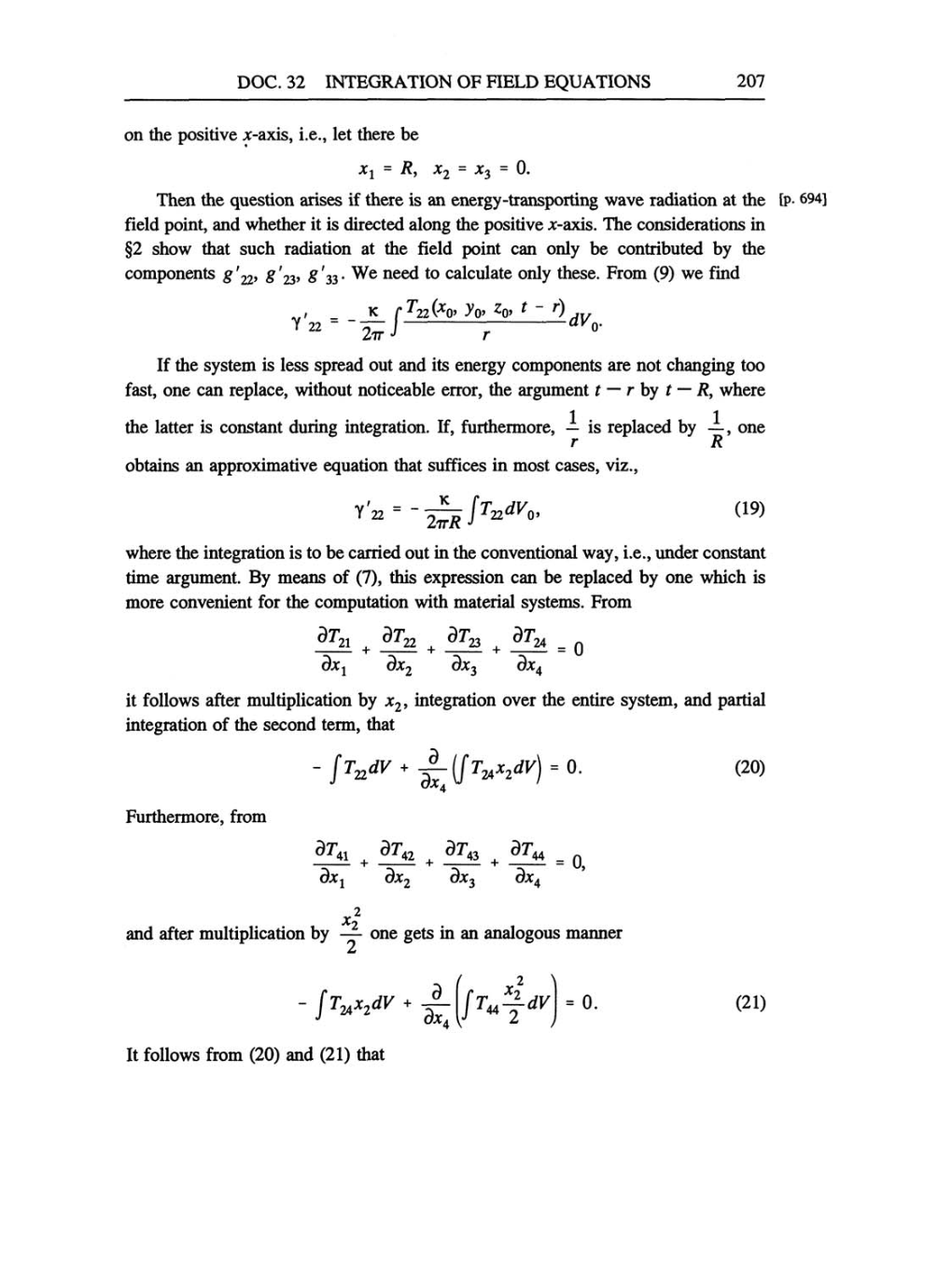DOC. 32 INTEGRATION OF FIELD
EQUATIONS
207
on
the
positive
x-axis, i.e.,
let there be
x1 =
R,
x2 =
x3
=
0.
Then the
question
arises
if
there is
an energy-transporting wave
radiation at the
[p.
694]
field
point,
and whether
it is
directed
along
the
positive
x-axis.
The
considerations
in
§2
show that such radiation at the field
point can only
be contributed
by
the
components
g'22, g'23,
g'33.
We need to calculate
only
these. From
(9)
we
find
Y'22 =
K
r
T22
(xO
?» *0-
'
-
r)
2tt
/
dv..
If
the
system
is less
spread
out and its
energy
components
are
not
changing
too
fast, one can
replace,
without noticeable
error,
the
argument
t
-
r by
t
-
R,
where
the latter
is
constant
during integration. If, furthermore,
1/r
is
replaced by
1/R,
one
obtains
an approximative equation
that suffices
in
most
cases, viz.,
T*
•
-
2%s
!T*dv* (19)
where the
integration
is to be carried out
in
the conventional
way,
i.e.,
under constant
time
argument. By means
of
(7),
this
expression
can
be
replaced by
one
which is
more
convenient for the
computation
with
material
systems.
From
dT21 dT22 dT23 dT24
dx1
dx2
dx3 dx4
=
0
it follows after
multiplication by
x2,
integration over
the entire
system,
and
partial
integration
of
the second
term,
that
-
/
V"
a
dx
(fT^dV)
-
0.
(20)
Furthermore,
from
dT41 dT42 dT43 dT44
dx1 dx2 dx3 dx4
=
0,
and after
multiplication by
x22/2
one gets
in
an analogous manner
-
/
TM^dV .
d
dx
fTu
xl
2
dV
=
0
(21)
It follows from
(20)
and
(21)
that
